Selected References:
- American College of Obstetricians and Gynecologists (ACOG). 2018. Committee Opinion No. 753: Assessment and Treatment of Pregnant Women with Suspected or Confirmed Influenza. Obstet Gyn. 132(4):e169-e173.
- Andrade C. 2017. Ketamine for Depression, 2: Diagnostic and Contextual Indications. J Clin Psychiatry. 78(5):e555-e558.
- Bai X, et al. 2013. Ketamine enhances human neural stem cell proliferation and induces neuronal apoptosis via reactive oxygen species-mediated mitochondrial pathway. Anesth Analg. 116(4):869-80.
- Baraka A, et al. 1990. Maternal awareness and neonatal outcome after ketamine induction of anaesthesia for caesarean section. Can J Anaesth 37:641-4.
- Brambrink AM, et al. 2012. Ketamine-induced neuroapoptosis in the fetal and neonatal rhesus macaque brain. Anesthesiology. 116(2):372-84.
- Capitanio JP, et al. 2012. Behavioral effects of prenatal ketamine exposure in rhesus macaques are dependent on MAOA genotype. Exp Clin Psychopharmacol. 20(3):173-80.
- Cheung HM, et al. 2017. How Ketamine Affects Livers of Pregnant Mice and Developing Mice? Int J Mol Sci. 18(5). pii: E1098.
- Chomchai S, et al. 2019. Effects of unconventional recreational drug use in pregnancy. Semin Fetal Neonatal Med. pii: S1744-165X (19)30019-8.
- Corssen G. 1974. Ketamine in obstetric anesthesia. Clin Obstet Gynecol 17:249-58.
- Dong C, et al. 2016. Ketamine exposure during embryogenesis inhibit cellular proliferation in rat fetal cortical neurogenic regions. Acta Anaesthesiol Scand. 60(5): 579-587.
- Galbert MW, Gardner AE. 1973. Ketamine for obstetrical anesthesia. Anesth Analg. 52:926-30.
- Galloon S. 1976. Ketamine for obstetric delivery. Anesthesiology 44:522-4.
- Janeczko GF, et al. 1974. Low-dose ketamine anesthesia for obstetrical delivery. Anesth Analg. 53:828-31.
- Product labeling. 2020. https://www.accessdata.fda.gov/drugsatfda_docs/label/2020/016812s046lbl.pdf
- Kocum A, et al. 2012. Spinal anesthesia under sedation using propofol and ketamine for laparoscopic cholecystectomy in a patient during 13th week of gestation. J Anesth. 26(4):634-635.
- Krissel J, et al. 1994. Thiopentone, thiopentone/ketamine, and ketamine for induction of anaesthesia in caesarean section. Eur J Anaesthesiol 11:115-22.
- Little B, et al. 1972. A study of ketamine as an obstetric anesthetic agent. Am J Obstet Gynecol. 113:247.
- Meer FM, et al. 1973. An intravenous method of anaesthesia for caesarean section. Part II: ketamine. Br J Anaesth. 45:191-6.
- Moore J, et al. 1971. Preliminary report on ketamine in obstetrics. Br J Anaesth 43:779-82, 1971.
- Ortega D, et al. 1999. Excretion of lidocaine and bupivacaine in breast milk following epidural anesthesia for cesarean delivery. Acta Anaesthesiol Scand. 43:394-7.
- Oats JN et al. 1979. Effects of ketamine on the pregnant uterus. Br J Anaesth 51:1163-6.
- Potter J, et al. 2019. A combination of inhaled nitrous oxide and low-dose ketamine infusion for labor analgesia. J Clin Anesth. 12;57:64-65.
- Sassano-Higgins S, et al. 2016. A Review of Ketamine Abuse and Diversion. Depress Anxiety. 33(8):718-27.
- Slikker W Jr, et al. 2007. Ketamine-induced neuronal cell death in the perinatal rhesus monkey. Toxicol Sci. 98(1):145-158.
- Su PH, et al. 2010. Infant with in utero ketamine exposure: quantitative measurement of residual dosage in hair. Pediatr Neonatol. 2010. 51(5):279-84.
- Talahma M, et al. 2018. Ketamine infusion used to successfully control refractory status epilepticus in a pregnant patient. Case Rep Neurol Med. 3041279.
- Wolfson P, et al. 2022. The pharmacokinetics of ketamine in the breast milk of lactating women: Quantification of ketamine and metabolites. J Psychoactive Drugs. 2022:1-5.

